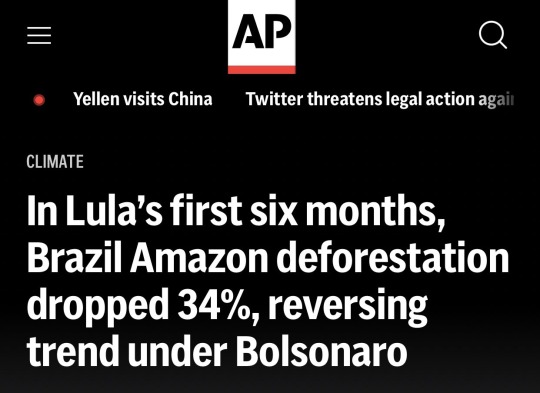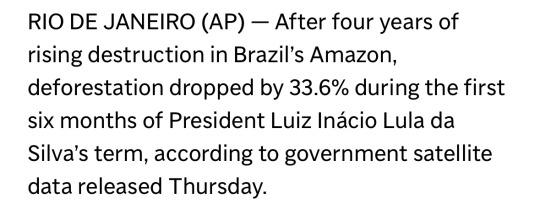#Amazon Rainforest
Explore tagged Tumblr posts
Text
Pope Francis defended Indigenous Peoples and the preservation of the Amazon

“The original Amazonian peoples have probably never been so threatened in their territories as they are now.” This statement was made by Pope Francis on 19 January 2018 during a meeting with Indigenous people from Brazil, Peru and Bolivia. The event was held in the city of Puerto Maldonado, Peru. The Pontiff, who died this Monday, the 21st, was the Catholic Church’s most active leader in defending Indigenous Peoples and the Amazon.
The meeting was attended by more than 30 Indigenous peoples, from whom the Pope heard reports of violations in their territories and highlighted the richness, knowledge and Indigenous diversity. On the occasion, he also stated that it was necessary to listen to the traditional population living in the Amazon. “Let it now be you yourselves who self-define and show us your identity. We need to listen to you,” he declared.
At the event, the Pontiff warned about the rise of extractivism in the region and the strong pressure from major economic interests, pointing to “greed for oil, gas, timber, gold, agro-industrial monocultures.” The leader of the Catholic Church also mentioned the “perversion of certain policies that promote conservation of nature without taking the human being into account,” which generates “situations of oppression for Indigenous peoples.”
Continue reading.
#brazil#politics#pope francis#religion#environmentalism#brazilian politics#peru#bolivia#peruvian politics#bolivian politics#amazon rainforest#indigenous rights#vatican#geopolitics#image description in alt#mod nise da silveira
19 notes
·
View notes
Text
Amazon deforestation fell over 50% in 2023 and as of August 2024 it was 46% lower than this time last year.
The Brazilian government has pledged to end Amazon deforestation entirely by 2030 and their current efforts have deforestation approaching the lowest it has been in the last six years.
#amazon rainforest#rainforest#rainforest conservation#conservation#forest conservation#good news#hope#climate change#environment#climate anxiety#ecoanxiety#hopepunk#positive news#climate optimism
6K notes
·
View notes
Text
"A recent court ruling from the Inter-American Court of Human Rights marks the first time an international judicial body has decided that indigenous peoples living in “voluntary isolation” have a right to do so, and that governments must act to ensure that right.
The ruling comes off the back of 20 years of activism challenging the Ecuadorian government’s encroachment on indigenous lands for oil drilling, and this, as well as other extractive activities like logging, were ruled to be intolerably disruptive to three groups living in voluntary isolation in the Ecuadorian Amazon.
International treaties protecting the rights of indigenous peoples have long been ratified at both the UN and the Organization of American States (OAS), but a case specifically determining whether a group living in voluntary isolation, which used to be called “uncontacted,” were guaranteed protection to allow them to continue doing so has never been ruled on.
While the United Nations Human Rights Council in 2009 and the Inter-American Commission on Human Rights in 2013 introduced guidelines and recommendations that included a right to choose self-isolation, neither were put into writing under international law, nor included in any treaty amendments.
As such, the Costa Rica-based court’s decision that nation-states, in this case Ecuador, must follow a “precautionary principle” when making decisions about future oil operations that may impede a group’s ability to live in self-isolation.
“This principle means that, even in the absence of scientific certainty regarding oil exploration and exploitation projects’ impacts on this territory, effective measures must be adopted to prevent serious or irreversible damage, which in this case would be the contact of these isolated populations,” said the court opinion, written in Spanish, and translated by Inside Climate News.
The three groups in question are the Tagaeri, Taromenane, and Dugakaeri, who are part of the overall Waorani peoples since they share cultural traditions and language.
Testimony was heard from a community leader of the Waorani, Penti Baihua, and two young women who at the ages of 2 and 6 were survivors of violent encroachment by oil workers who killed members of the girls’ group, forcibly introduced them to modernity, and displaced them to different parts of the Amazon.
In the current case, the court ruled that a protected area the size of Delaware that was established in the early 2000s to guarantee indigenous Waorani (and others) rights was created in such a way as to leave oil exploration areas outside protection, despite being the ancestral home of Baihua and his people.
A 6-mile deep buffer zone surrounding the heart of the Tagaeri, Taromenane, and Dugakaeri’s territory called the “Intangible Zone,” has been repeatedly penetrated by extractive industries, which have built roads and other “colonial” infrastructure.
The court ruled that Ecuador must honor the results of a 2023 referendum, in which voters chose to stop oil operations in that region indefinitely.
The court used the term “living in voluntary isolation” to reflect that fact that there are no unconctacted tribes on Earth, but perhaps as many as 200 who have seen evidence of modernity, and received minimal contact—perhaps from a related tribe that doesn’t live in isolation—and chose to remain without any interaction with the modern world either out of fear or self-interest."
-via March 28, 2025
#indigenous#ecuador#south america#waorani#voluntary isolation#indigenous rights#indigenous people#environmental justice#oil#oil drilling#colonialism#amazon#amazon rainforest#amazonian peoples#good news#hope
2K notes
·
View notes
Text




A pair of siblings from California inspired by the Cholo culture, a moped living in Havana Cuba, a beast form jaguar part of a Amazon rainforest tribe, and a llama best transformer that lives in the mountains of Peru
#digital art#drawing#illustration#artists on tumblr#fanart#art#oc#transformers#transformers OC#transformers idw#transformers au#one spark au#transformers earthspark#beast wars#cholostyle#chola#havana#Cuba#peru#amazon rainforest
2K notes
·
View notes
Text
Dandelion News - February 15-21
Like these weekly compilations? Tip me at $kaybarr1735 or check out my Dandelion Doodles!
1. Solar farms managed for nature boost bird abundance and diversity, new study finds

“There were more than twice as many farmland birds in the well-managed solar farms compared with the intensively farmed land, and nearly 16 times as many woodland birds. […] Overall, diversity was 2.5 times higher, while woodland birds were nine times more diverse.”
2. Washington judge blocks Trump’s gender-affirming care ban, says it's unconstitutional in multiple ways

“This marks the second time in a week that a judge has stood in the way of Trump’s attacks on trans kids. [… The ruling grants] a temporary restraining order that halts enforcement of provisions in Trump’s directive that would cut off federal funding to medical institutions that provide gender-affirming care to minors.”
3. Fog harvesting could provide water for arid cities

“17,000 sq m of mesh could produce enough water to meet the weekly water demand of [… the] urban slums. 110 sq m could meet the annual demand for the irrigation of the city's green spaces. Fog water could be used for soil-free (hydroponic) agriculture, with yields of 33 to 44lb (15 to 20kg) of green vegetables in a month.”
4. Audubon Applauds Bipartisan Federal Effort to Protect Delaware River Basin with Critical Reauthorization Bill

“The bill would […] ensure long-term conservation and restoration efforts, expand the official definition of the basin to include Maryland, and prioritize projects that serve small, rural, and disadvantaged communities. […] The watershed provides important year-round habitats and critical migratory stopovers for approximately 400 bird species[….]”
5. mRNA vaccines show promise in pancreatic cancer in early trial
“Half of the people in the study — eight of the participants — responded to the vaccine, producing T cells that targeted their tumors. […] Just two of the patients who had a response to the vaccine had their cancer return during the three-year follow- up, compared to seven of the eight who did not respond to the vaccine treatments.”
6. Minn. Lt. Gov. Flanagan Makes It Official; She's running for U.S. Senate

“[Flanagan has] “championed kitchen-table issues like raising the minimum wage, paid family and medical leave, and free school meals.” If elected, Flanagan, a tribal citizen of the White Earth Nation, would become the first Native American female U.S. senator in history.”
7. Federal Funding Restored for Low-Income Alabama Utility Assistance After Outcry

“A program meant to help low-income Alabamians pay their utility bills has resumed two weeks after it was canceled due to an executive order from President Donald Trump. […] “We can confirm the funds are reaching those affected by the previous pause[….]””
8. Modeling study suggests Amazon rainforest is more resilient than assumed

“[Previous] studies were either conducted with global climate models that used a simplified representation of convection [or were on a regional scale….] According to the computations, mean annual precipitation in the Amazon does not change significantly even after complete deforestation.“
9. States are moving forward with Buy Clean policies despite Trump reversal

““Buy Clean is a great example of how states and other nonfederal actors can continue to press forward on climate action, regardless of what the federal government does,” said Casey Katims, executive director of the U.S. Climate Alliance, a bipartisan coalition of two dozen governors.”
10. The rewilded golf courses teeming with life

“A wildflower meadow, ponds, scrub habitat, coastline and even an area of peat bog can be found on this little 60-acre (24-hectare) plot, which boasts roe deer, otters, lizards, eels and a huge array of insects and birds.”
February 8-14 news here | (all credit for images and written material can be found at the source linked; I don’t claim credit for anything but curating.)
#hopepunk#good news#nature#us politics#solar power#solar panels#solar energy#birds#biodiversity#gender affirming care#transgender#trans rights#trans healthcare#water conservation#habitat#migratory birds#vaccines#vaccination#mrna vaccine#pancreatic cancer#cancer#native american#alabama#low income#amazon rainforest#rainforest#executive orders#climate action#golf course#habitat restoration
980 notes
·
View notes
Text
hey uh so I haven't seen anyone talking about this here yet, but
the amazon river, like the biggest river in the fucking world, in the middle of the amazon fucking rainforest, is currently going through its worst drought since the records began 121 years ago
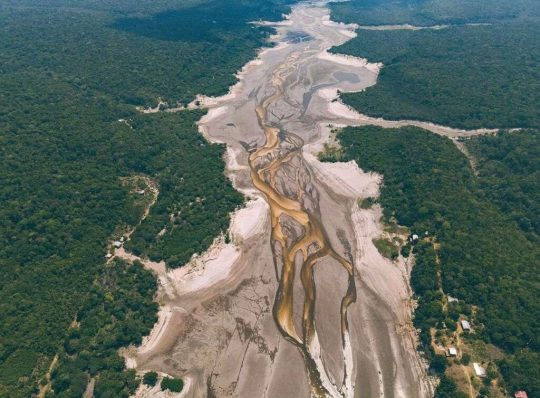
picture from Folha PE
there's a lot going on but I haven't seen much international buzz around this like there was when the forest was on fire (maybe because it's harder to shift the narrative to blame brazil exclusively as if the rest of the world didn't have fault in this) so I wanted to bring this to tumblr's attention
I don't know too many details as I live in the other side of the country and we are suffering from the exact opposite (at least three cyclones this year, honestly have stopped counting - it's unusual for us to get hit by even one - floods, landslides, we have a death toll, people are losing everything to the water), but like, I as a brazilian have literally never seen pictures of the river like this before. every single city in the amazonas state is in a state of emergency as of november 1st.
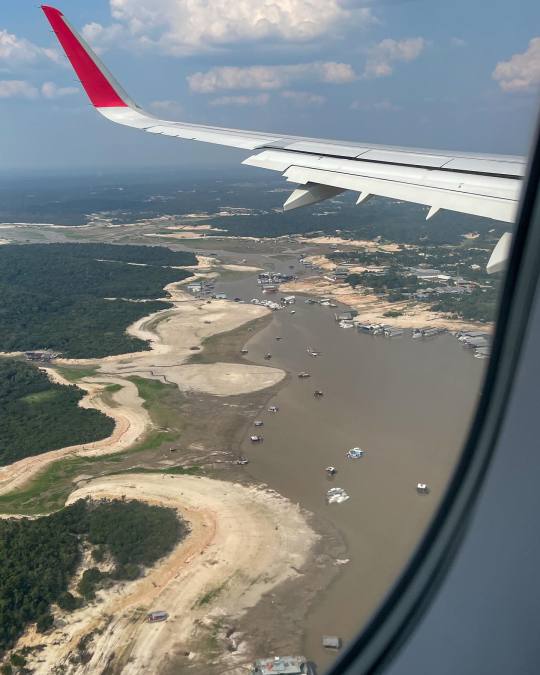

pictures by Adriano Liziero (ig: geopanoramas)
we are used to seeing images of rio negro and solimões, the two main amazon river affluents, in all their grandiose and beauty and seeing these pictures is really fucking chilling. some of our news outlets are saying the solimões has turned to a sand desert... can you imagine this watery sight turning into a desert in the span of a year?
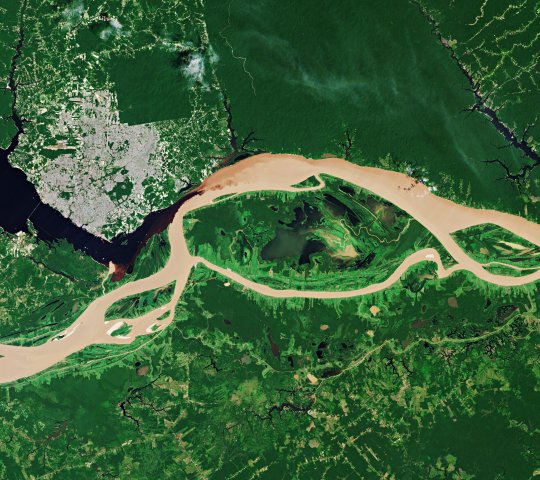
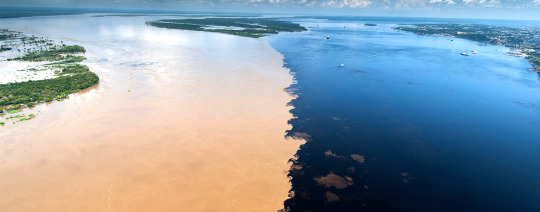
while down south we are seeing amounts of rain and hailstorms the likes of which our infrastructure is simply not built to deal with, up north people who have built everything around the river are at a loss of what to do.
the houses there that are built to float are just on the ground, people who depend on fishing for a living have to walk kilometers to find any fish that are still alive at all, the biodiversity there is at risk, and on an economic level it's hard to grasp how people from the northern states are getting by at all - the main means of transport for ANYTHING in that region is via the river water. this will impact the region for months to come. it doesnt make a lot of sense to build a lot of roads bc it's just better to use the waterway system, everything is built around or floats on the river after all. and like, the water level is so incomprehensibly low the boats are just STUCK. people are having a hard time getting from one place to another - keep in mind the widest parts of the river are over 10 km apart!!
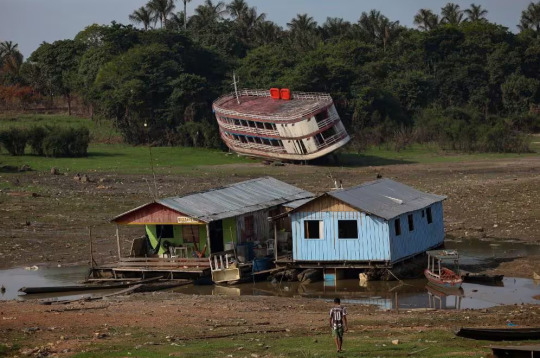
this shit is really serious and i am trying not to think about it because we have a different kind of problem to worry about down south but it's really terrifying when I stop to think about it. you already know the climate crisis is real and the effects are beyond preventable now (we're past global warming, get used to calling it "global boiling"). we'll be switching strategies to damage control from now on and like, this is what it's come to.
I don't like to be alarmist but it's hard not to be alarmed. I'm sorry that I can't end this post with very clear intructions on how people overseas can help, there really isn't much to do except hope the water level rises soon, maybe pray if you believe in something. in that regard we just have to keep pressing for change at a global level; local conditions only would not, COULD NOT be causing this - the amazon river is a CONTINENTAL body of water, it spans across multiple countries. so my advice is spread the word, let your representatives know that you're worried and you want change towards sustainability, degrowth and reduced carbon emissions, support your local NGOs, maybe join a cause, I don't know? I recommend reading on ecological and feminist economics though
however, I know you can help the affected riverine families by donating to organizations dedicated to helping the region. keep in mind a single US dollar, pound or euro is worth over 5x more in our currency so anything you donate at all will certainly help those affected.
FAS - Sustainable Amazon Fundation
Idesam - Sustainable Developent and Preservation Institute of Amazonas
Greenpeace Brasil - I know Greenpeace isn't the best but they're one of the few options I can think of that have a bridge to the international world and they are helping directly
There are a lot of other smaller/local NGOs but I'm not sure how you could donate to them from overseas, I'll leave some of them here anyway:
Projeto Gari
Caritás Brasileira
If you know any other organizations please link them, I'll be sure to reblog though my reach isn't a lot
thank you so much for reading this to the end, don't feel obligated to share but please do if you can! even if you just read up to here it means a lot to me that someone out there knows
also as an afterthought, I wanted to expand on why I think this hasn't made big news yet: because unlike the case of the 2020 forest fires, other countries have to hold themselves accountable when looking at this situation. while in 2020 it was easier to pretend the fires were all our fault and people were talking about taking the amazon away from us like they wouldn't do much worse. global superpowers have no more forests to speak of so I guess they've been eyeing what latin america still has. so like this bit of the post is just to say if you're thinking of saying anything of the sort, maybe think of what your own country has done to contribute to this instead of blaming brazil exclusively and saying the amazon should be protected by force or whatever
#solarpunk#sustainability#environmentalism#climate change#climate crisis#global warming#amazon rainforest#amazon river#geography#brazil#degrowth#punk#global boiling#ecopunk#anti capitalism#climate action#climate activism#the world does not die on my watch#i saw someone use that tag and uh i like it we should make it a thing#long post#:/ sorry i know no one likes lengthy bad news posts on their dashes but i've been thinking about this quite a bit#and i don't really know what to do to help bc i don't have money to donate and i am 10 thousand km away#i think i could be doing more to help but i am already trying my best#again dont feel obligated to share or read this but it would be nice and i would love you forever#have removed lbv from the post
7K notes
·
View notes
Text



971 notes
·
View notes
Text


#good news#arapaima#fish#endangered species#environmentalism#science#nature#animals#conservation#amazon rainforest#amazon river#environment#community organizing#community conservation
1K notes
·
View notes
Text
#rainforest#amazon rainforest#amazonian peoples#the amazon#colonialism#first nations#the amazons#ecuador#oil#oil exploration
212 notes
·
View notes
Text
Amazon rainforest, South America: The Amazon rainforest is a moist broadleaf tropical rainforest in the Amazon biome that covers most of the Amazon basin of South America. This basin encompasses 7,000,000 km2 of which 6,000,000 km2 are covered by the rainforest. This region includes territory belonging to nine nations and 3,344 indigenous territories. The majority of the forest, 60%, is in Brazil, followed by Peru with 13%, Colombia with 10%, and with minor amounts in Bolivia, Ecuador, French Guiana, Guyana, Suriname, and Venezuela. Wikipedia
#Amazon rainforest#Brazil#Peru#Colombia#Bolivia#Ecuador#French Guiana#Guyana#Suriname#Venezuela#South America#South American Continent
351 notes
·
View notes
Text
#talkin#tik tok#un#united nations#uncc#united nations climate change#amazon rainforest#deforestation#youthpastorryan
136 notes
·
View notes
Text
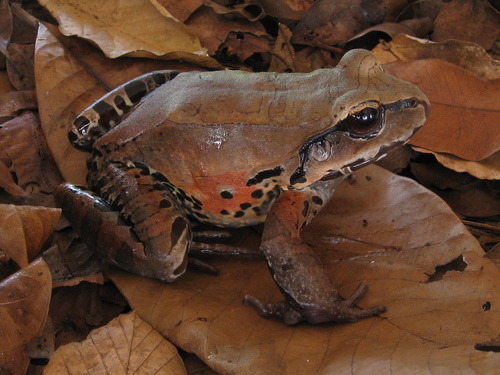
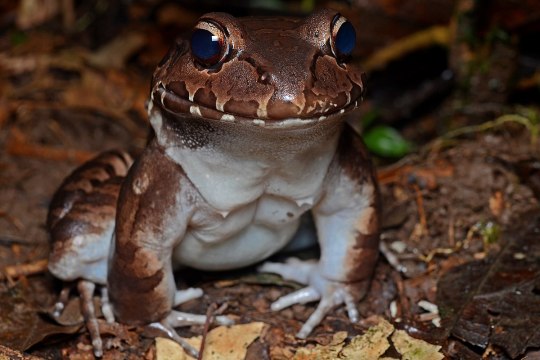

The Smouldering Smoky Jungle Frog
The smoky jungle frog (Leptodactylus pentadactylus), or huwa in the native Brazilian Kwaza language, is a species of frog found throughout the Amazon rainforest, and as far north as the cloud forests of Costa Rica. They are found primarily in tropical rainforests, as well as marshes, artificial ponds, and near rivers. Despite their penchant for moisture, they spend most of their time hiding among leaf litter on the forest floor.
The huwa frog's shape and coloration allows them to blend seamlessly into the leaf litter of their natural habitat. Adults are mottled brown, grey, black, red, and orange, mimicking the coloration of fallen leaves, while the underside is white. Adults also have two ridges extending down either side of the back which imitates the shape of a discarded leaf. Males are slightly larger than females, with a maximum length of 18.0 cm (7.1 in) compared to 17.6 cm (6.9 in); adults can weigh anywhere from 60-70 grams (0.15 lbs).
L. pentacactylus is active mainly at night, when they emerge to feed on insects, small birds, frogs, snakes, lizards and mammals such as bats and rodents. Their camouflage allows them to blend in with the leaf litter and wait to ambush passing prey. They can also effectively hide from predators such as larger snakes, caimans, and coatis. In addition to their invisibility, adults also secrete a mild toxin from their skin which can irritate the eyes and cause an itchy rash.
Outside the breeding season, smoky jungle frogs are largely solitary. Males defend their territories by loudly calling throughout the night; from May to November these calls also serve to attract females. After mating, females dig a shallow depression in the ground and construct a nest from foam made of discarded sperm, water, and air. Up to 1,000 eggs are deposited in the nest. Eggs hatch only 2-3 days after being laid, and the frequent rains wash the tadpoles into a near by pond or slow-moving stream. The tadpoles feed voraciously on vegetation, algae, and insects, and within four weeks metamorphose into adults. Once fully grown, individuals can live up to 15 years in the wild.
Conservation status: Smoky jungle frogs are considered Least Concern by the IUCN. Their primary threat is habitat loss.
Photos
Marco Aurelio de Sena
Geoff Gallice
David Torres
#smoky jungle frog#Anura#Leptodactylidae#ditch frogs#white-lipped frogs#southern frogs#frogs#amphibians#tropical forests#tropical forest amphibians#tropical rainforests#tropical rainforest amphibians#south america#northern south america#amazon rainforest#central america#animal facts#biology#zoology#ecology
142 notes
·
View notes
Text
From the article:
On May 21, twenty communities in the Peruvian Amazon received long-awaited legal titles to their traditional lands, marking a significant victory in the struggle for Indigenous peoples’ land rights and environmental protection. Encompassing approximately 75,000 acres, an area three times the size of Manhattan, the titles were delivered during a well-attended ceremony in the Huitoto Murui Indigenous community of Centro Arenal, in the state of Loreto. Indigenous leaders traveled from remote rivers that feed into the Amazon to receive their titles in person. Local and state officials also attended. “Today we can say that our lands are indeed ours, and we can defend ourselves from any aggression that arrives at our community,” said Anibal Oliveira, Indigenous Ticuna leader of the San Salvador community. Last year, an innovative strategy devised with our partners allowed Rainforest Foundation US to secure more land titles in ten months than in the previous three years. Now, in 2024, we are already surpassing that record. An additional 10,500 acres of titles are expected to be delivered to communities in the same region over the next couple months.
#indigenous conservation#indigenous rights#amazon conservation#habitat conservation#amazon rainforest#peruvian amazon#good news#hope#newyears2025#environment#ecology#habitat#rainforest conservation#ecoanxiety#ecogrief
329 notes
·
View notes
Text
"Amid record-high temperatures, devastating disasters, and the resulting climate anxiety that comes with them, it can be easy to give in to despair.
The resounding question of “does this even matter?” likely echoes on a loop, every time you toss an item in the recycling bin, or call your elected officials for the umpteenth time.
But according to research from the University of California San Diego’s School of Global Policy and Strategy, public outcry can indeed lead to significant environmental action — even when public officials are openly hostile to climate-forward policies.
Their paper, titled “Going Viral: Public Attention and Environmental Action in the Amazon,” will soon be published in the Journal of the Association of Environmental and Resource Economists. It focuses on the “unprecedented” public scrutiny following forest fires in the Brazilian Amazon in August of 2019.
These fires occurred soon after Jair Bolsonaro became Brazil’s president, after a staunchly anti-environmental campaign.
But after analyzing both media coverage and international pressure towards Brazil’s federal government, the researchers found that the increased public attention resulted in a 22% decrease in fires in the country’s Amazon Rainforest.
This, in turn, translated into the avoidance of an estimated 24.8 million tons of CO2 emissions.
“Our research underscores the significant role that public attention and media coverage can play in influencing local environmental policies and actions,” the study’s coauthor Teevrat Garg, said in a statement...
“The 2019 surge in attention led to immediate governmental responses, which contributed to the notable decrease in fires,” he added.
To come to these conclusions, the researchers compared fire activity in Brazil with that in Peru and Bolivia, countries that did not receive the same amount of public pressure, though typically still have the same level of fire activity per square kilometer."
-via GoodGoodGood, October 4, 2024
#wildfires#amazon#amazon rainforest#climate change#brazil#bolsonaro#south america#climate research#environmental news#good news#hope
965 notes
·
View notes
Text

Amazon Rain Forest, Brazil
134 notes
·
View notes
